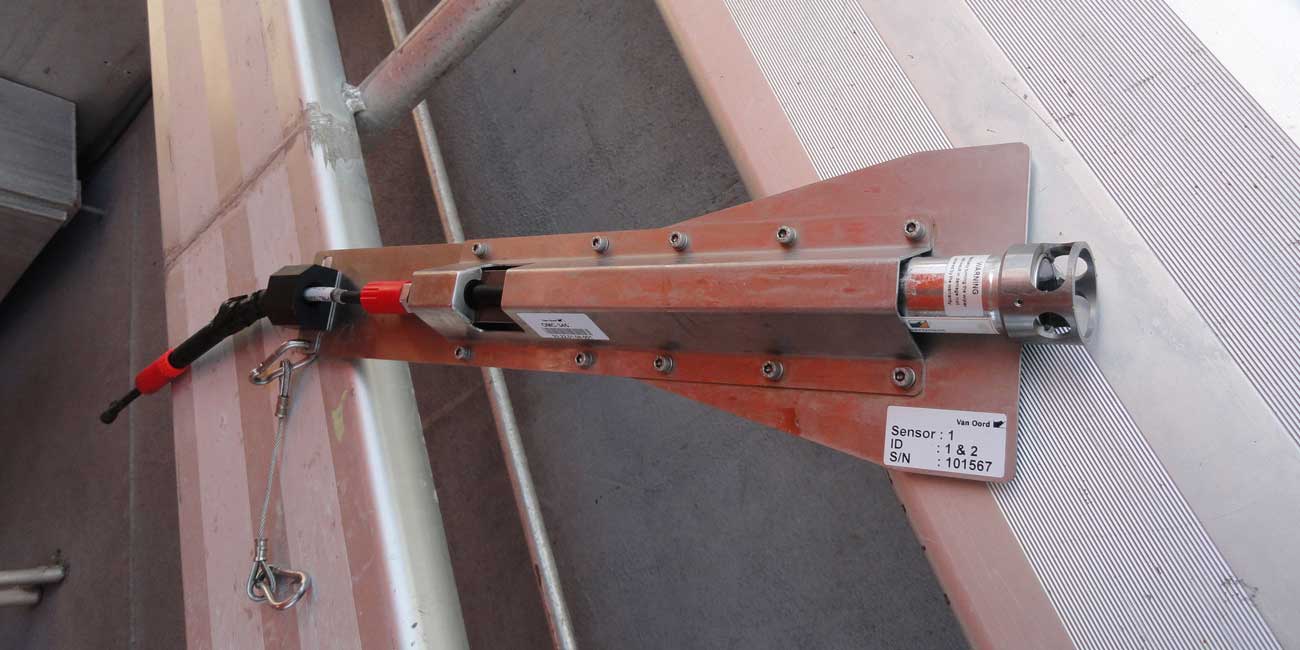Wednesday 4 September 2013

International dredging and marine contractor Van Oord was awarded a dredging contract in Darwin Harbour for the Ichthys LNG Project. The material to be dredged from the harbour floor will consist of rock and sediment and is deposited at a designated disposal ground located approximately 12 km offshore in accordance with a Dredging and Spoil Disposal Management Plan approved by Regulators.
Environmental monitoring
As part of the environmental management and monitoring, Van Oord is carrying out monitoring activities of the dredge in the near-field. These comprise monitoring campaigns deploying a monitoring vessel equipped with a Mobile Spill Monitoring System (MSMS) to measure within the dredge plume and buoy measurements to continuously measure at strategic locations in the dredge near-field. This monitoring aims to provide further information on the source terms of the dredging activities.
The Mobile Spill Monitoring System
To determine the size and magnitude of the dredge plume, measurements are carried out with a Mobile Spil Monitoring System (MSMS), the monitoring system that is specifically designed for this purpose by Van Oord.
The MSMS system can be considered to be the most advanced system currently available for the monitoring of suspended sediments. The system includes a combination of water sampling devices, three OMC-345 multi-parameter probes (measuring turbidity, depth, conductivity, salinity and temperature at different depths), two ADCP’s and a DGPS for the measurement of suspended sediment fluxes, dispersing from dredging sites.
All monitoring devices are integrated into one mobile unit, which is situated on the deck of the survey vessel. Operating of the equipment and monitoring of the data takes place inside the cabin where the monitoring data is presented and registered by using specialized software.
The advantage of the MSMS is that it not only combines continuous data capture by ADCP profile measurements with towed turbidity measurements and water sampling, but that it also links in with survey systems and the award winning OpenEarth data-management tools to provide a plug-and-play solution for data collection and reporting.
By making this integration step, the MSMS allows the real time comparison of results for the acoustic and optical method which is crucial in the quality assessment of the data. Any significant difference in results between the two measurement methods flags an inconsistency in the plume parameters leading to a potential refusal of the data.
Equipment from Observator
Observator Instruments B.V. was asked to develop the towed part of the MSMS. The enclosed photo shows the setup of the dredging system using a barge.
A very strong streamer cable with a suppressor wing is equipped with three OMC-345 combi-probes. These rugged and stainless steel probes measure turbidity, conductivity, temperature, salinity and depth.
The streamer system is designed to allow for monitoring in all required conditions and is tested in the laboratories of Observator Instruments B.V. to meet the specifications given by Van Oord.
The use of the streamer cable in combination with the suppressor wing assures the combi-probes are aligned on a tightened string during all operations so that the streamer operates under a small angle with the vertical. The high strength allows that the system can be used even at the maximum tidal currents present in Darwin Harbour.
The sensors are fixed to the cable at a flexible depth. There is also flexibility within the monitoring systems that can be used on the streamer cable. It can be applied using one to multiple combi-probes or other digital probes. Incorporation of any additional serial sensor, like an YSI 6-series sonde, to the termination pod at the end of the cable is also possible. The sensors are mounted on small sensor wings. These wings keep the sensors stable and horizontal in the water.
Monitoring buoys
Next to the application of a MSMS, Van Oord uses monitoring buoys in Darwin Harbour as an additional stationary monitoring method. The buoys continuously provide data from the strategically chosen monitoring locations. Data collection of turbidity is carried out by optical sensors on a pre-defined fixed depth. Each buoy is provided with solar panels and a 12 V/dc battery.The sensor used is the YSI-6820, equipped with anti-fouling kits. These kits limit the impact of fouling under the high fouling conditions in the Darwin Harbour waters. All measured data is stored in the OMC-045-III datalogger of Observator Intruments B.V.
The collected data is sent over GPRS to the server of Van Oord’s headoffice in Rotterdam using FTP. The data collection program from Observator Instruments B.V. (OMC-Data-OnLine) collects and stores the data in a database. The data is shared by Van Oord with its clients.
Some pictures of this project:
By continuing to use the site, you agree to the use of cookies. more information
The cookie settings on this website are set to "allow cookies" to give you the best browsing experience possible. If you continue to use this website without changing your cookie settings or you click "Accept" below then you are consenting to this.